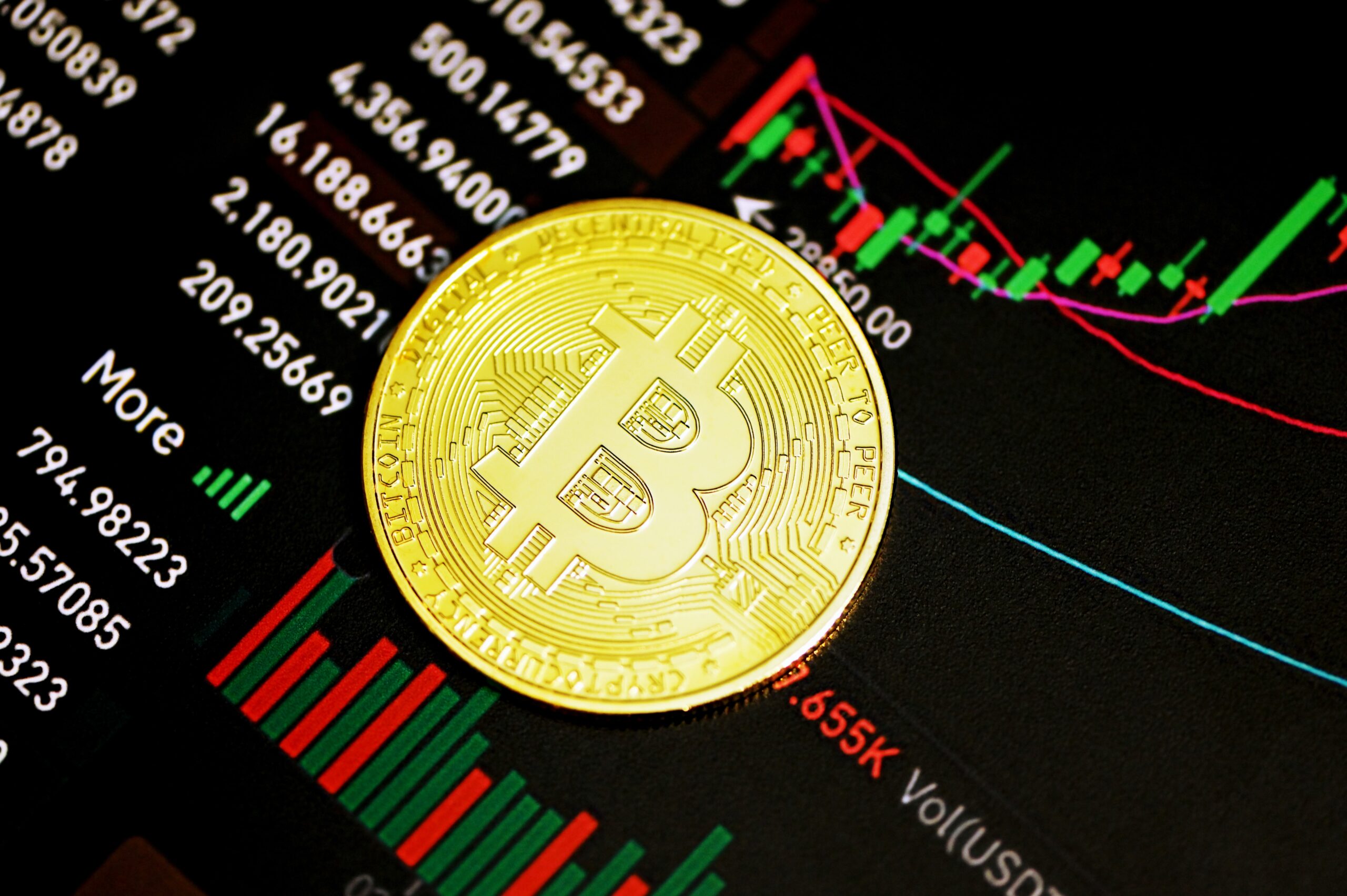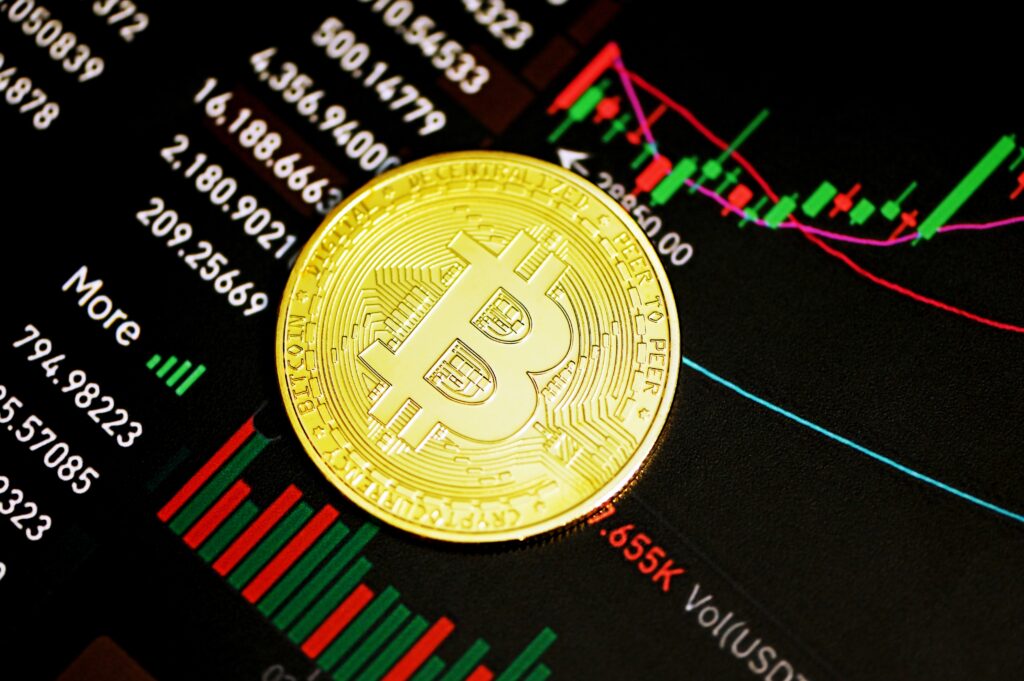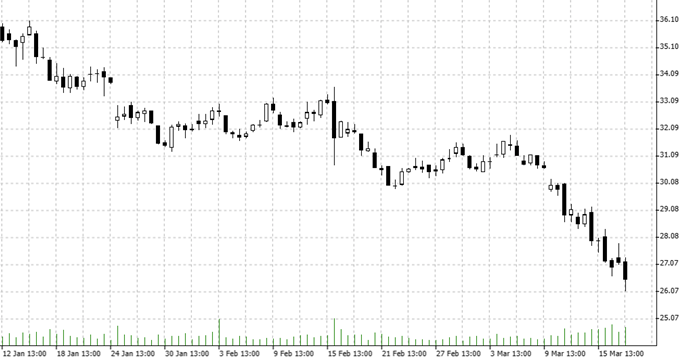

22.03.2023 – Of all things, the cyber currency Bitcoin has recently made a name for itself as a safe haven. The reason: if one’s own bank wobbles or if there is only a suspicion of it, then investors need a place to park their capital. For example, servers on the web. It remains to be seen whether these are really safe. But no matter: just get away from your own bank. Before the Federal Reserve’s upcoming interest rate decision, we wonder whether this trend will continue.
Nice catch-up for Bitcoin, here the four-hour chart. It is a bit surprising, as it was the crypto bank Silvergate Capital that was the first stone to fall in the banking domino. We saw a similar small bull market in gold last time, although the gold price has just reset again. We wonder if BTCUSD is also due for a reset once the crisis is cleared. If it is cleared up

Source: Bernstein Bank GmbH
Meanwhile, things seem to be calming down for US banks – in fact, we saw a small rally in their European counterparts recently as well. Which is because the central banks and also the industry itself have intervened, we have reported on this here.
Interest rate decision by the Fed
Now all eyes are on the Federal Reserve again. The blog Newsquawk commented that the market still sees a 25 basis point rate hike. However, there is another problem case with First Republic Bank, major US banks are probably working on a takeover at the moment. Bloomberg commented that the Fed should actually stick to its rate hike of 50 basis points. But that would be a real surprise for the market – and that is exactly what nobody needs at the moment.
Impending death spiral
It looks like the Federal Reserve is trapped ahead of the upcoming interest rate decision. The financial blog “Substack” has just declared an “economic death spiral”. Either the Federal Reserve raises interest rates to curb inflation and ease the burden on consumers. Or it saves the financial market with cheap money.
“Substack”: “The current banking crisis is triggering more stock buybacks, and a return to Quantitative Easing with the bank bailouts, including plans to inject another $2 trillion into the banking system, on top of the $300 billion increase in the Fed’s balance sheet, in just the last week. Unfortunately, this makes for high inflation – but the economy is dependent on the “cocaine” of cheap money. Substack continues: “Now the Fed is trapped with two bad options, raise rates or pivot, both of which will lead to inevitable economic doom.” Whereby the “pivot” means the turning point in the rise in interest rates.
In this sense, it is clear that nothing is clear. If the Fed sticks to its tightening, this could be seen as stupidity on the one hand; or as a signal that it has everything sovereignly under control and that the crisis is passé. But if the Fed pauses on interest rates, this new liquidity could be celebrated. Or it could trigger a panic because things in the banking sector are perhaps much worse than previously known. And then safe havens are likely to be in demand again. The only thing that is certain is that volatility increases in turbulent times. Which brings opportunities for traders. Whether long or short – we wish you successful trades and investments!
______________________________________________________________________________________________________________
The content of this publication is for general information purposes only. In this context, it is neither an individual investment recommendation or advice nor an offer to purchase or sell securities or other financial products. The content in question and all the information contained therein do not in any way replace individual investor- or investment-oriented advice. No reliable forecast or indication for the future is possible with respect to any presentation or information on the present or past performance of the relevant underlying assets. All information and data presented in this publication are based on reliable sources. However, Bernstein Bank does not guarantee that the information and data contained in this publication is up-to-date, correct and complete. Securities traded on the financial markets are subject to price fluctuations. A contract for difference (CFD) is also a financial instrument with leverage effect. Against this backdrop, CFD trading involves a high risk up to the point of total loss and may not be suitable for all investors. Therefore, make sure that you have fully understood all the correlating risks. If necessary, ask for independent advice. CFDs are complex instruments and are associated with the high risk of losing money quickly because of the leverage effect. 68% of retail investor accounts lose money trading CFD with this provider. You should consider whether you understand how CFD work and whether you can afford to take the high risk of losing your money.7
